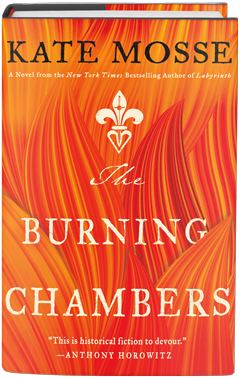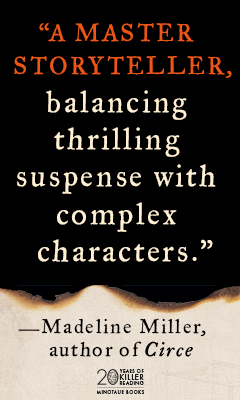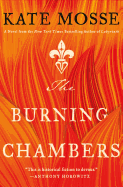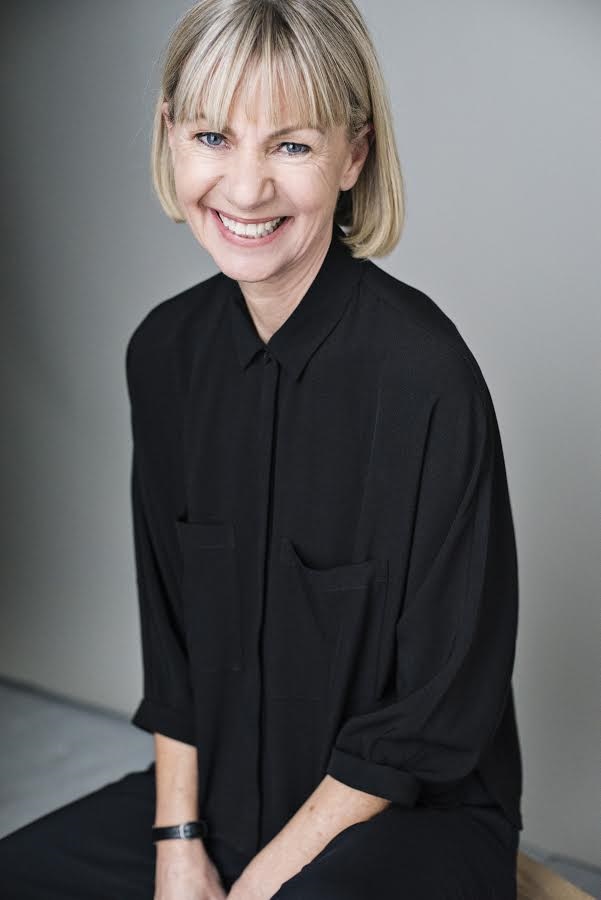The Burning Chambers
by Kate Mosse
The Burning Chambers is an epic novel of the French Wars of Religion, packed with historical detail in richly textured stories of love, family, betrayal, faith and war.
The first in a planned four-part series, the novel opens with a prologue set in South Africa in 1862--a nod to the eventual 300-year story arc that author Kate Mosse plans for the series. But after this brief tease, the rest of The Burning Chambers remains squarely stationed in the late 16th century, starting in the very early days of the violent battles between the Huguenots (French Protestants) and Catholics that wracked France from 1562 to 1598. In the small town of Carcassone, Minou, the daughter of a Catholic bookseller, works to keep her family afloat as her father grieves the loss of his beloved wife. At the same time, the Protestant Piet Reydon finds himself in Carcassone to deliver a stolen relic to fellow Huguenot revolutionaries. Piet's path crosses with that of his one-time friend, now a powerful Catholic priest in the nearby city of Toulouse, and then with Minou's, setting off a series of events that is both labyrinthine and expertly plotted. Amidst these comings and goings and encounters, diary entries from an unnamed woman suggest there is more than just a relic missing--there is a will and an inheritance at stake. And though it is unclear whose will, and who is set to inherit, and what, exactly, is set to be inherited, it is clear that the diary's owner will not rest until the will--and any potential inheritor--have been buried once and for all. After all, "old crimes cast long shadows..."--as do old secrets.
The Burning Chambers is epic in every sense of the word: it is both long, weighing in at more than 600 pages, and dense, filled with dozens of characters, intersecting storylines and multiple locations. A list of family names and locations, a detailed historical map and an author's note about the historical background of the Wars of Religion provide context for the incredible amount of information to come, but Mosse (Labyrinth, The Taxidermist’s Daughter) never falls victim to the trap of too much detail. In her capable hands, the novel moves along at a rapid pace, loyal to the historical detail of actual events without getting lost in the annals of history.
This is a hard balance to strike in any work of historical fiction, but when done right, it is a wonder to behold. The result is a novel that re-creates a moment and place in time--in this case, 1562 in the southwest of France--while also speaking to the universal experience of humans in times of great strife and upheaval. What is right and what is wrong in such a time? How does one press forward without knowing what the next day holds? And what of love, and family, and belonging amidst an ever-changing landscape rife with violence, torture and betrayals? What does it mean to be faithful, and what does it mean to act in the name of that faith? In light of thousands dying, how do we remember to value the life of each individual on his or her own merits?
These are big, timeless questions, all of which Mosse explores through the everyday lives of everyday people. Minou visits her father's bookshop; her aunt prays in the family chapel; her 13-year-old brother gets up to no good in the way only 13-year-old boys can. Piet holds whispered meetings with other Huguenots; a tailor is tortured to death for information; a woman lures a man of power into her bed. On their own, none of these events are remarkable, but as Mosse weaves them together, they become the fabric of a larger story that clips along at a steady pace toward a startling, violent finish.
Though The Burning Chambers begins a planned series, the novel itself stands on its own; Mosse has wrapped up the tale of these particular characters neatly enough to be satisfying, while leaving enough open ends to continue their tale into the future. Reflecting on an old tale her mother once told her of the siege of Carcassone in the times of the Cathars, Minou wonders to herself, "How was it that, in more than three hundred and fifty years, so little had changed? So much suffering, such waste and cruelty. And for what?" Though readers will have to wait for The City of Tears to be released to find out for certain, it's fair to expect that we may all be asking ourselves this same question as the rest of Mosse's incredible series unfolds. --Kerry McHugh








